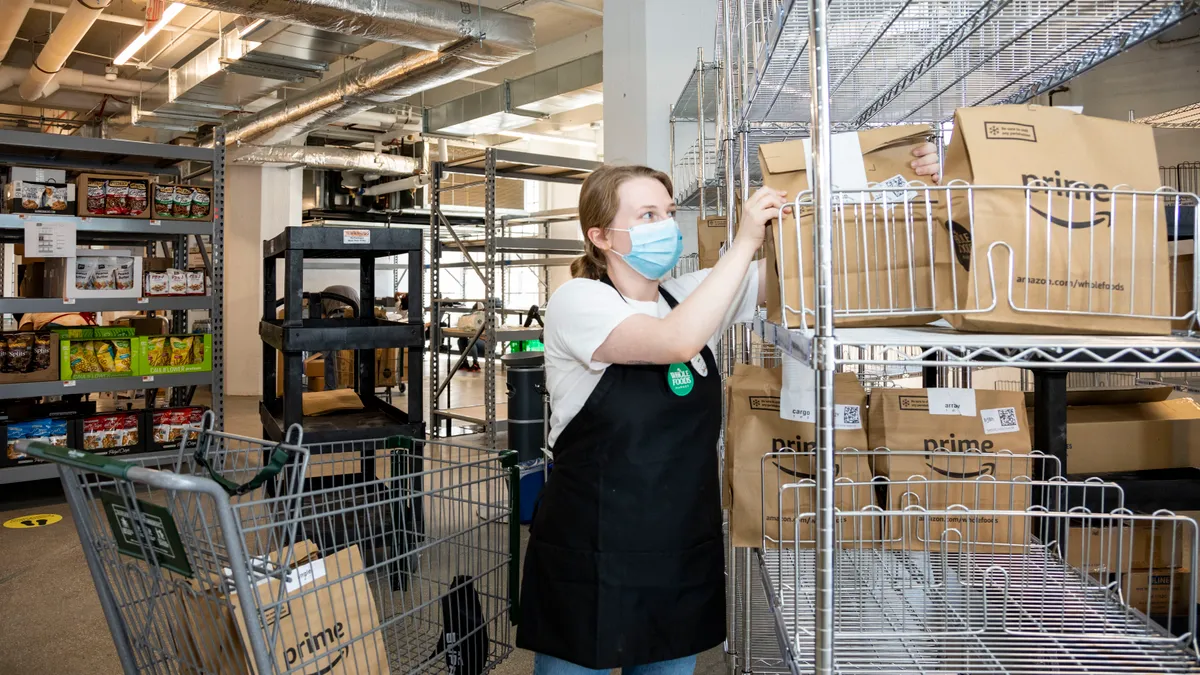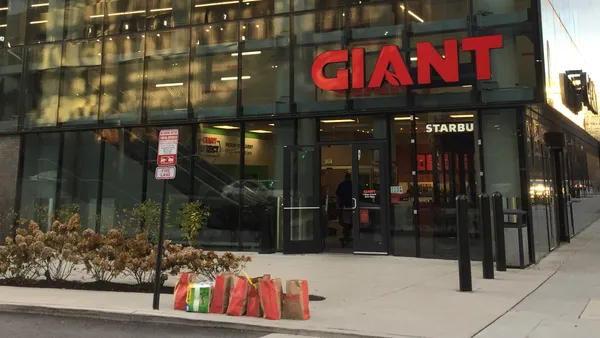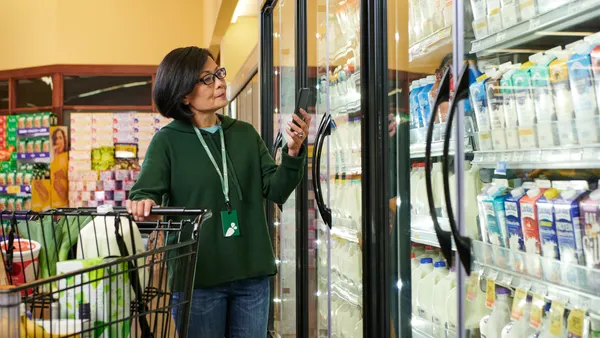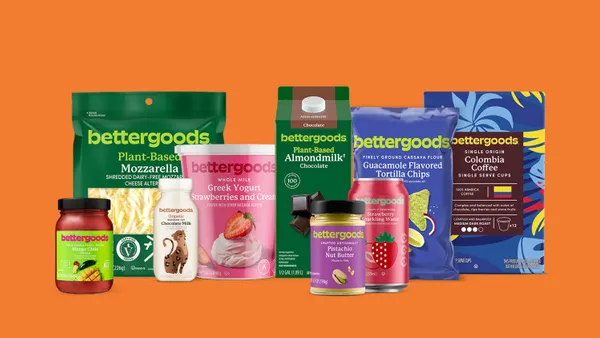Dive Brief:
- Whole Foods has opened its first dark store dedicated to permanently fulfilling online orders, according to a blog post by parent company Amazon. The fulfillment hub is located in the Industry City complex in Brooklyn’s Sunset Park neighborhood and will serve customers throughout the borough.
- This is the first dedicated online facility for Whole Foods, which has until now mostly relied on its retail stores to fulfill pickup and delivery orders, a company spokesperson said. Whole Foods had temporarily converted six stores located in cities across the country to online-only operations, and all but two of those locations — one in San Francisco and one in Chicago — have opened to foot traffic.
- The Brooklyn location will be staffed by Whole Foods Market employees, “hundreds” of whom were hired specifically to work in the store, according to the Amazon post.
Dive Insight:
Whole Foods’ decision to open its first e-commerce dark store shows just how critical online grocery has become for the grocer and its parent company. It's also another way in which the specialty grocer is adopting Amazon’s playbook to fuel its growth.
In the past few months, Amazon’s Prime delivery service has helped Whole Foods rapidly build out delivery availability, helping fuel a threefold increase in Amazon’s online grocery sales in the second quarter. Now Amazon, which specializes in e-commerce fulfillment and has built a fulfillment network for its Fresh service, is helping Whole Foods reach more shoppers migrating online during the pandemic.
Although the virus’s spread has driven many of Amazon and Whole Foods’ latest grocery e-commerce moves, the plans for the Brooklyn dark store were set in motion more than a year ago, according to Amazon. Whole Foods operates in many affluent urban and suburban markets where online grocery adoption is high, making e-commerce investments imperative to building loyalty and competing with fellow food retailers.
And while the grocer had converted a few stores to online-only operations out of necessity to optimize the locations, its Brooklyn location is purpose-built for online fulfillment, complete with long aisles stocking dozens of products, many of them in bulk boxes, and a walk-in cooler for perishable items. Competing grocers have also invested in dark stores in recent years, and experts say these facilities and other efforts to push beyond picking from store aisles are critical to meeting rising e-commerce demand.
A Whole Foods spokesperson declined to say whether Whole Foods and Amazon will build more dark stores. But given the rising demand for online grocery delivery, this likely won’t be the only location.
Look for the company to target areas where Prime membership is high. Some of Whole Foods’ most visible changes under Amazon’s ownership have involved integrating Prime into the Whole Foods experience, including blue- and yellow-tag discounts, indicating Amazon primarily views Whole Foods through the lens of its potential to benefit Prime members.
Amazon has its sights trained on grocery and is rolling out new services, promotions and retail brands to compete in the $800 billion industry. Last week the company unveiled its first Fresh-branded supermarket in California, adding to a suite of options that includes Fresh e-commerce, Amazon Go and Go Grocery, and of course Whole Foods.












